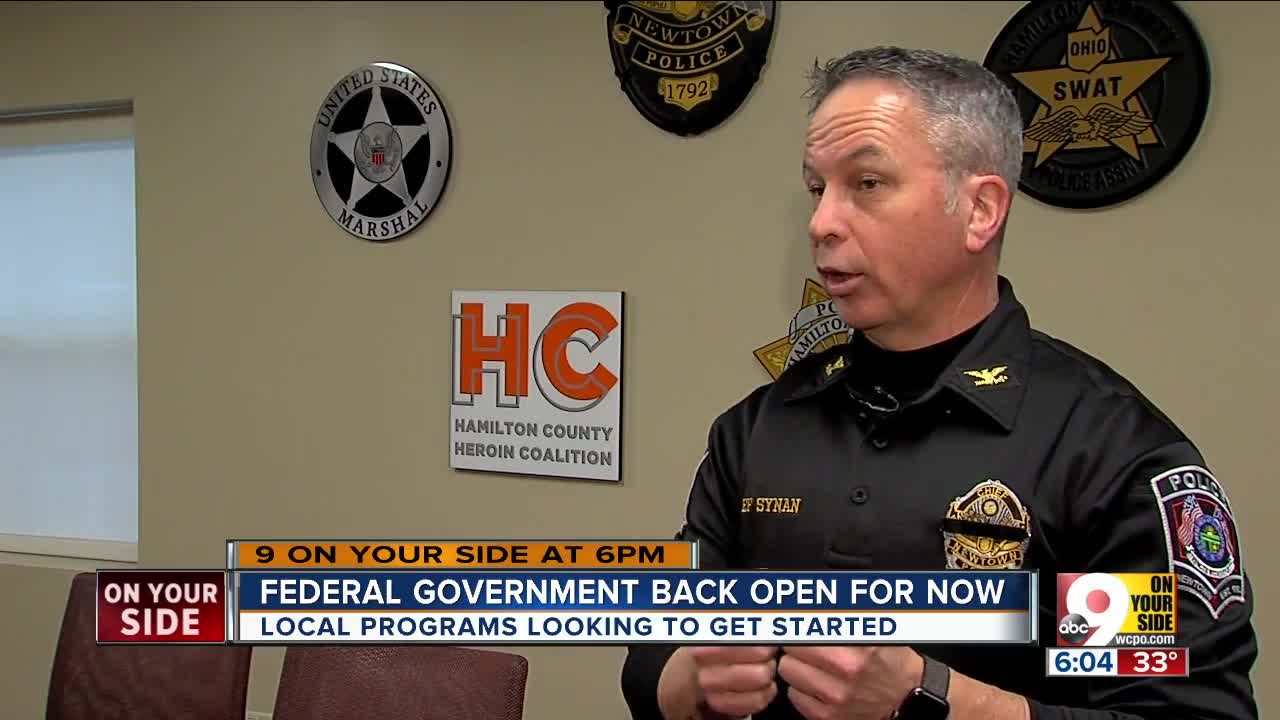CINCINNATI — The government shutdown has had a wide effect, including preventing funding for research on a program the Hamilton County Heroin Coalition has hoped to develop.
"It holds us up on some of these projects moving forward," said Newtown police chief Tom Synan.
The coalition has been working with the federal government to research and develop a new program to help those battling opioid addiction that would help people fighting with addiction find help in treatment, not prison. Hamilton County received a $500 thousand federal grant to kickstart this program initially, but the government shutdown put a halt to the funding temporarily.
Specifically, the program focuses on those who aren't high-level criminals.
"We haven't launched that yet, but the dollars from the federal government have allowed us to do research to start to get that in line to launch," said Hamilton County commissioner Denise Driehaus. She explains that "pre-arrest diversion" is a part of the plan to get people out of jails and into treatment facilities.
If researched and implemented, it also hinges on partnering with Cincinnati Bell to use the free WiFi they've been implementing throughout the city.
"Connect to the free WiFi, agree to the terms," said Synan. "We'll use artificial intelligence. Someone can say 'my child is addicted to heroin, cocaine, I need help.' Artificial intelligence starts a conversation with that person, connects them to other projects we've done. Like findlocaltreatment.com."
The hope is that people who may not typically have access to the internet or phone would still have a way to reach out for help for themselves or their loved ones.
"No matter what is debated on the top level, here at the street level it's us trying to save people's lives and make our communities better," said Synan.
Programs like the Quick Response Team seem to be working: Colerain township alone has seen 82 percent of people seen by the team enter treatment.
"We want to deal with a system that deals with all addiction," said Synan. This includes alcohol, cocaine, meth, and other addictive substances.
Driehaus said she remains hopeful the federal grant dollars will return soon, helping to get the pre-arrest diversion program up and running.




